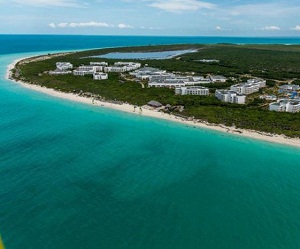 It is becoming increasingly necessary to promote, and at the same time protect, the Planet’s natural riches, which is why the declaration of 2017 as International Sustainable Tourism Year, and the celebration, this coming May 22, of International Biological Diversity Day represent two ideal platforms from which to continue working toward this end.
It is becoming increasingly necessary to promote, and at the same time protect, the Planet’s natural riches, which is why the declaration of 2017 as International Sustainable Tourism Year, and the celebration, this coming May 22, of International Biological Diversity Day represent two ideal platforms from which to continue working toward this end.
According to the United Nations “Diversity in species, ecosystems and landscapes attracts tourism and promotes economic growth. In turn, a well-managed tourist sector can help reduce threats to key wildlife populations, and maintain or increase biodiversity, through tourism revenue.”
This is a highly important economic sector worldwide which, as well as offering benefits such as job creation, opportunities for development, and infrastructure investment, can also be harmful, especially to the environment.
That is where sustainable tourism comes in: a globally expanding initiative which contributes to conserving and promoting natural and cultural heritage, minimizing the negative economic, social and environmental impact of the industry, and offering tourists a unique experience by putting them in direct contact with nature, the local population and community.
CUBA, MORE THAN A SUN & BEACH DESTINATION
In the 1990s, Cuban tourism amounted to “sun and beach” holidays; however the island has begun to diversify its tourist offers over recent years, as outlined in the 2030 National Economic and Social Development Plan.
The document cites tourism as a strategic sector for Cuba’s economic development, with a focus on diversifying offers such as “tourism related to marinas and yachting; golf and real-estate; nature; agricultural; cruise holidays; history; culture; heritage; conventions; congresses and fairs; and especially health and quality of life; emphasizing its contribution to strengthening the development of the Cuban economy.”
In this regard, the island has numerous sustainable tourism attractions to support sustainable tourism: 5,800 kilometers of coastline; 211 protected areas; and nine UNESCO World Heritage Sites, among others.
(Granma)